Ahhh…the dog days of summer! Where we spend lazy Saturday afternoons in the backyard, entertaining friends or just relaxing in the shade of our favorite tree. To better enjoy these hot days in the sunshine, you want your lawn looking its absolute best.
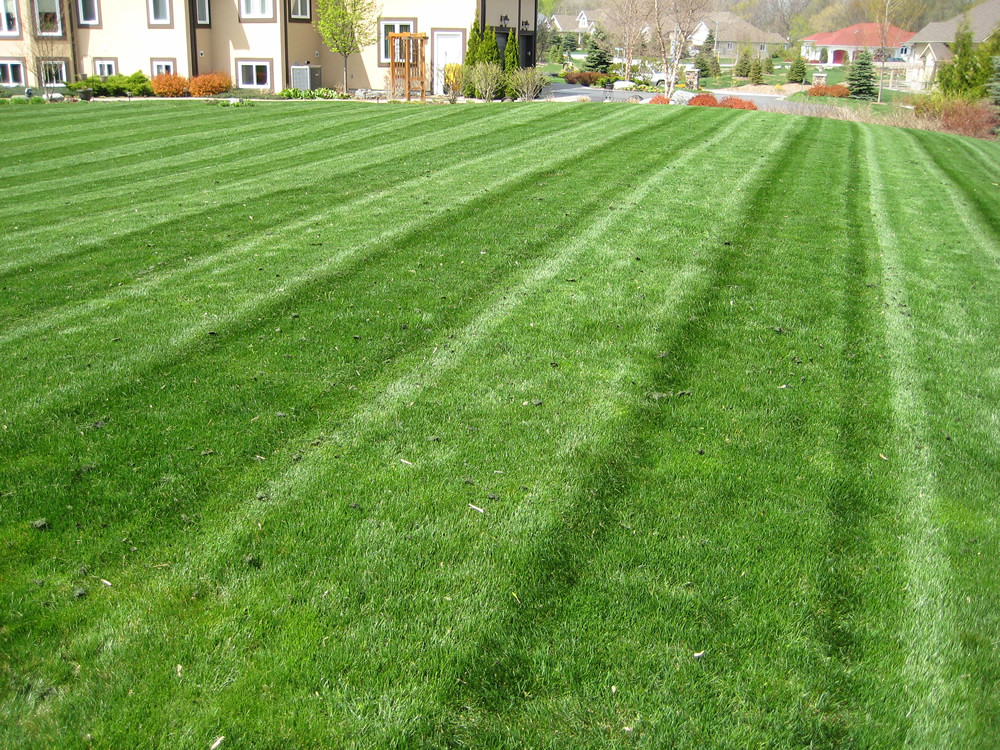 Photo credit: Richard Murphy on Flickr
Photo credit: Richard Murphy on Flickr
The following summer lawn care tasks will have your lawn in tip-top shape for all your summer activities, and you’ll have Dad complimenting you on your effort.
Mow Your Grass a Bit Higher
Once the summer heat sets in, it’s helpful for your grass if you mow it slightly higher than you usually do. You still want to make sure you only remove one-third of its height when cutting the lawn, but move your mower deck a notch or two higher. Keeping your grass taller shades the soil better and, in turn, helps keep more moisture in the root zone.
Taller grass also helps shade out weeds, keeping them from taking a stronghold in your yard.
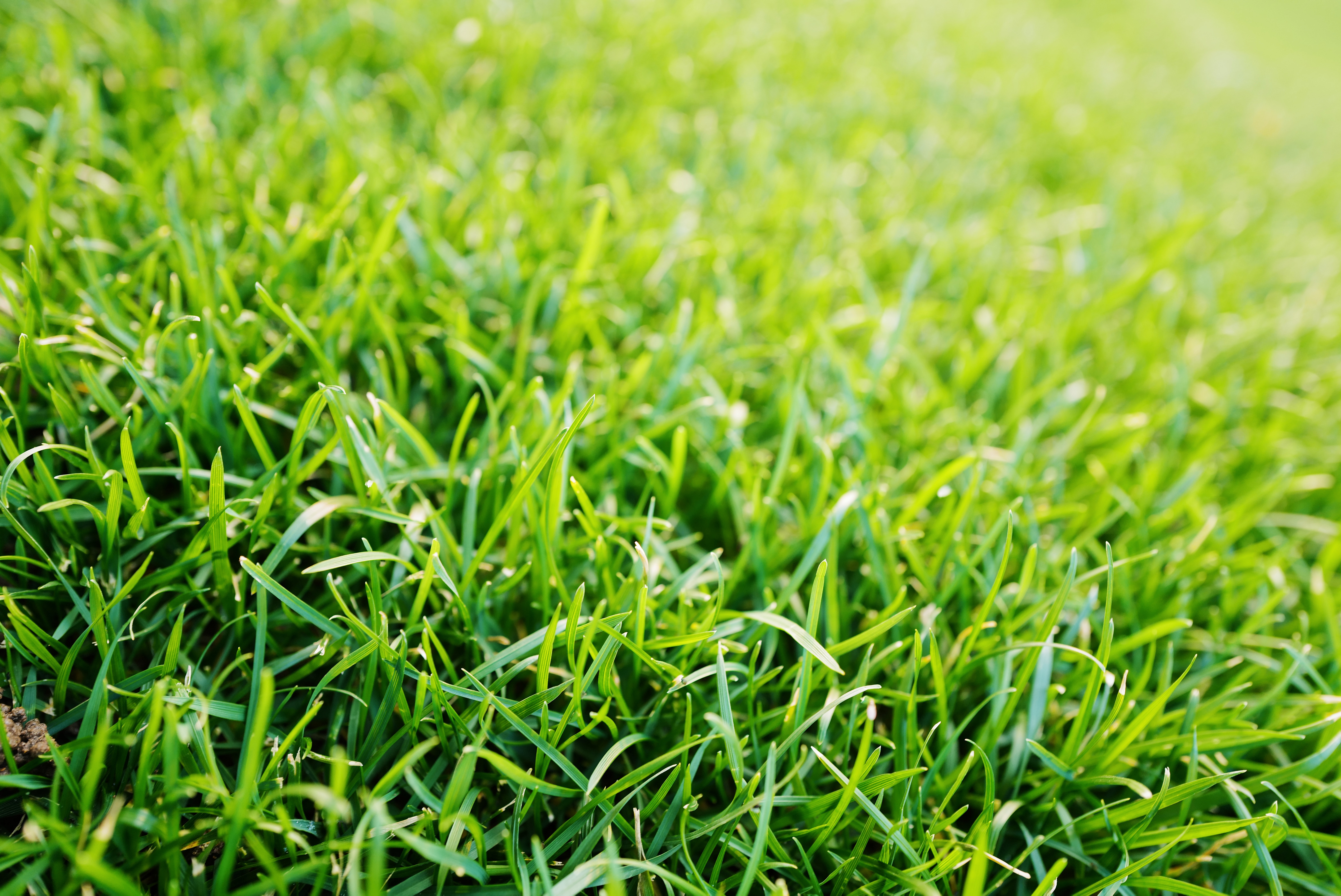 Photo credit: fan yang on Unsplash
Photo credit: fan yang on Unsplash
Keep the Lawn Mower Blades Sharp
It’s recommended to always sharper your mower blades at the start of the season, but it’s equally important to keep them sharp through the summer. Periodically sharpen them, so they are free of nicks and gouges.
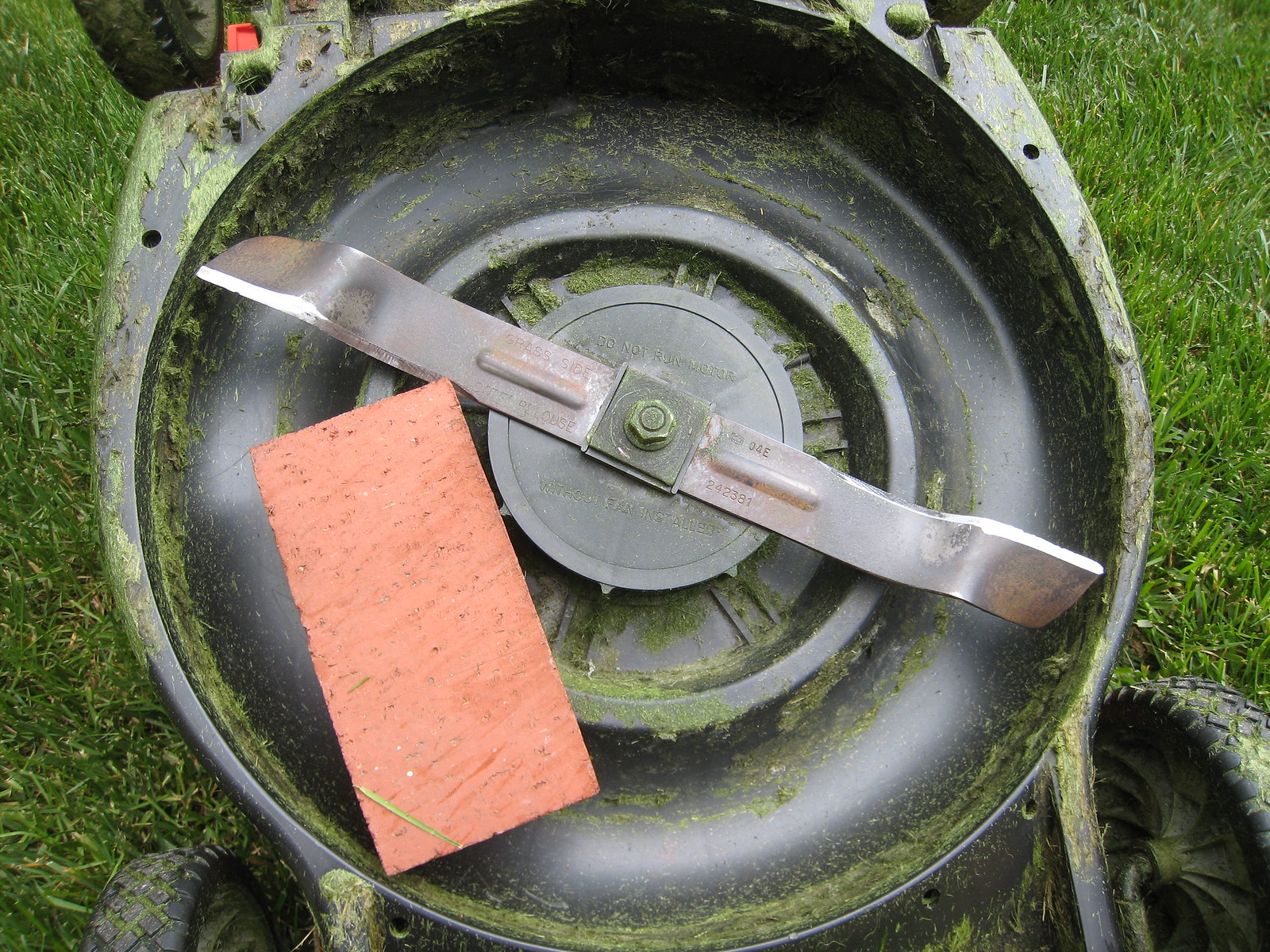 Photo credit: Richard Sprague on Flickr
Photo credit: Richard Sprague on Flickr
Dull, chipped lawnmower blades tear the tops off the grass blades instead of cleanly shearing them off the plant. When they tear, it creates a torn, jagged edge that lets more water evaporate from the plant, causing undue stress.
Practice Grasscycling
Practicing grass-cycling is another excellent way to keep your lawn looking robust and lush. Instead of bagging up the grass clippings every time you mow, let the lawn mower mulch them and drop the short clippings onto the lawn. Mulching them onto the lawn is beneficial for the grass and helps save you time and labor.
On average, grass clippings contain about a small amount of nitrogen and potassium, 4% and 2%, respectively. While this isn’t enough to forego fertilization, they break down rapidly when the clippings are mulched. Once decomposed, they return these nutrients to the soil and help improve root and shoot growth.
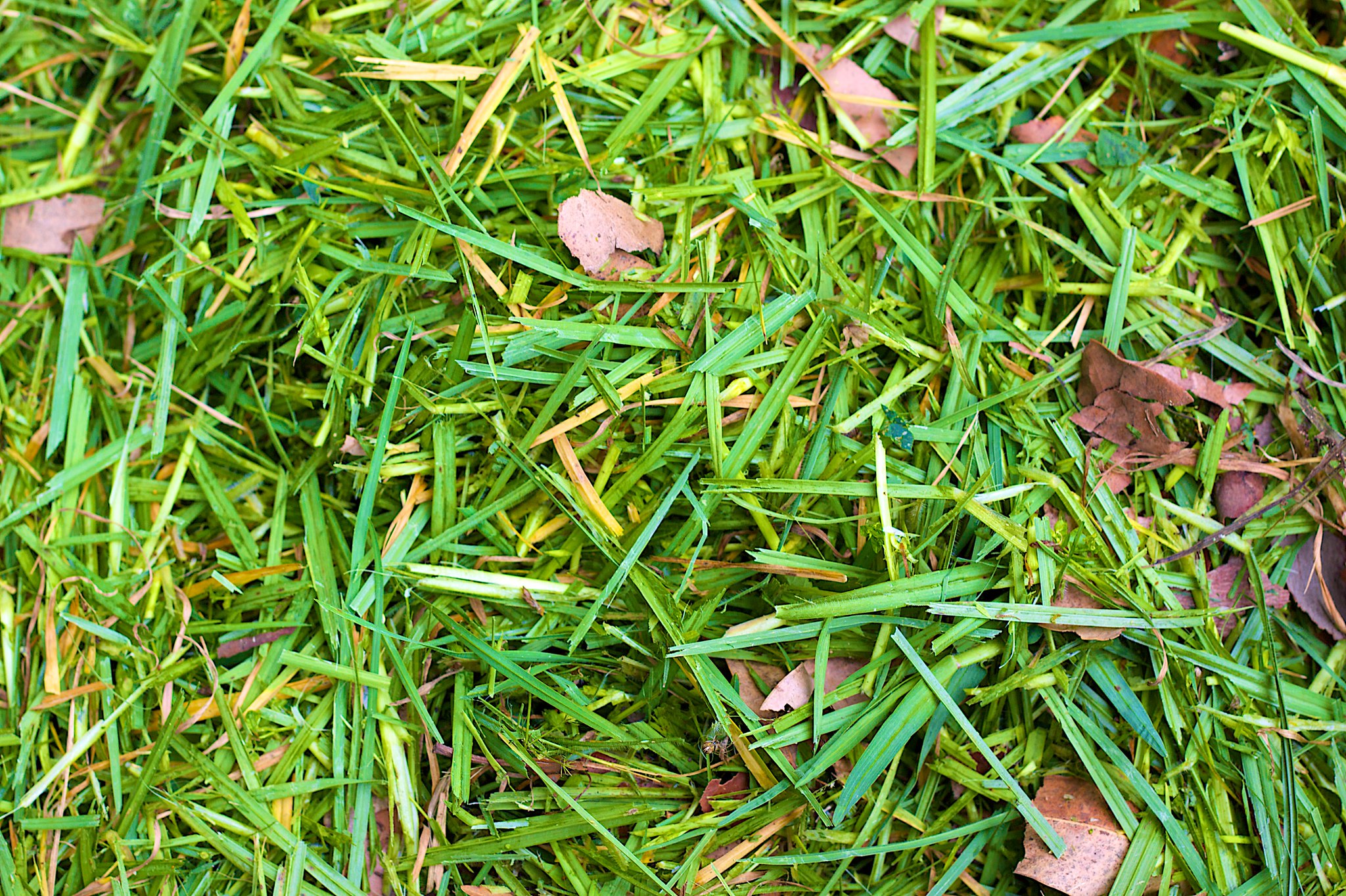 Photo credit: Brendan Giles on Flickr
Photo credit: Brendan Giles on Flickr
Water Infrequently Yet Deeply
During the warm summer months, your grass needs, on average, one to one and a half inches of water each week. In areas where rainfall doesn’t provide this moisture, it’s best if you don’t water your lawn daily. Instead, space it out as far as possible and then apply a larger amount. This method encourages the root system to grow deeper into the ground and fan out more, giving the grass better drought tolerance.
The precise timing and amount of water depends on your climate and soil type. Sandy soils dry out quicker than clay, and arid areas dry faster than humid climates.
Regularly Check and Adjust Your Sprinkler System
If you have a sprinkler system to water your grass, you need to check it regularly to make sure it’s watering correctly.
- Check the water pressure once in a while. If there is a significant pressure drop, you may have a leak in the system somewhere. Small drops can be based on extraneous factors. If the pressure consistently drops, you may want to adjust the watering length to compensate for the lower pressure and flow.
- Walk around the yard—or watch from inside through the window—when the sprinklers are on, looking to see if heads aren’t rotating or don’t seem to be putting out as much water as the others. They may be clogged with soil or mineral buildup and need to be cleaned.
- Also, watch the spray patterns to ensure they are hitting their intended target area. Sometimes they can become misaligned and start spraying water incorrectly. Adjust any that are out of alignment.
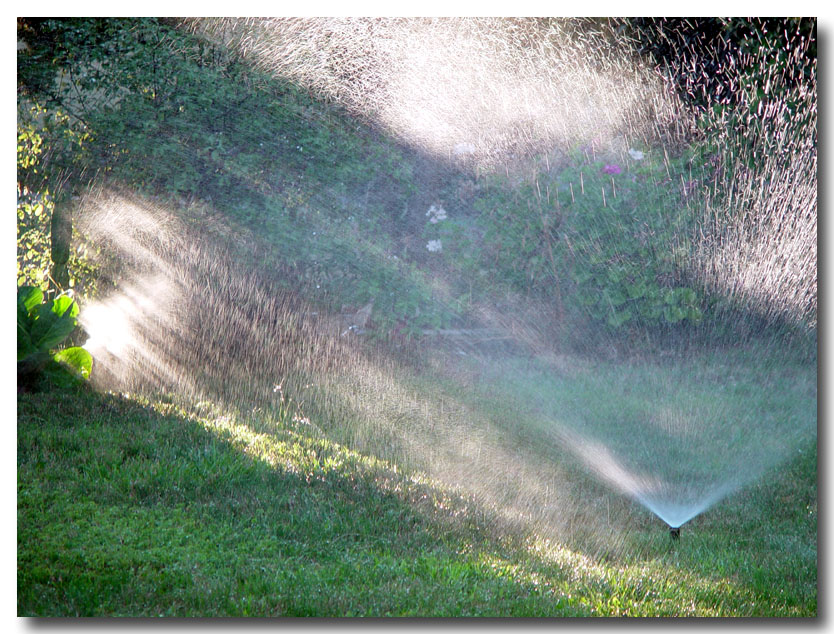 Photo credit: WorldExplorer on Flickr
Photo credit: WorldExplorer on Flickr
Install a Smart Irrigation Controller
Many automatic sprinkler systems have a build-in rain delay feature that skips over a watering cycle in the event of rain. But a smart controller goes a step further. A smart irrigation controller connects to your home’s internet to automatically pull local weather data from numerous weather forecast services and nearby weather stations. You provide it with information on your grass type and soil.
The controller automatically adjusts the watering schedule based on temperature, humidity level, and rainfall. Your grass stays well-watered with just the right amount, increasing your water-use efficiency.
Water Efficiently Without a Sprinkler System
A sprinkler system is a fantastic feature, but its installation costs are sometimes restrictive. Thankfully, there are many different ways to water your grass without an automated system. These methods range in price and the amount of effort you expend. Both are effective and can be very efficient when the water is applied as close to the ground as possible, so little moisture evaporates.
-
Choose the Conventional Way
Many people choose the tried and true method of watering with a hose. You can opt to use a nozzle, watering wand, or sprinkler head in this scenario. This method is inexpensive and allows you to customize watering to your lawn’s needs. It is, however, the most labor-intensive.
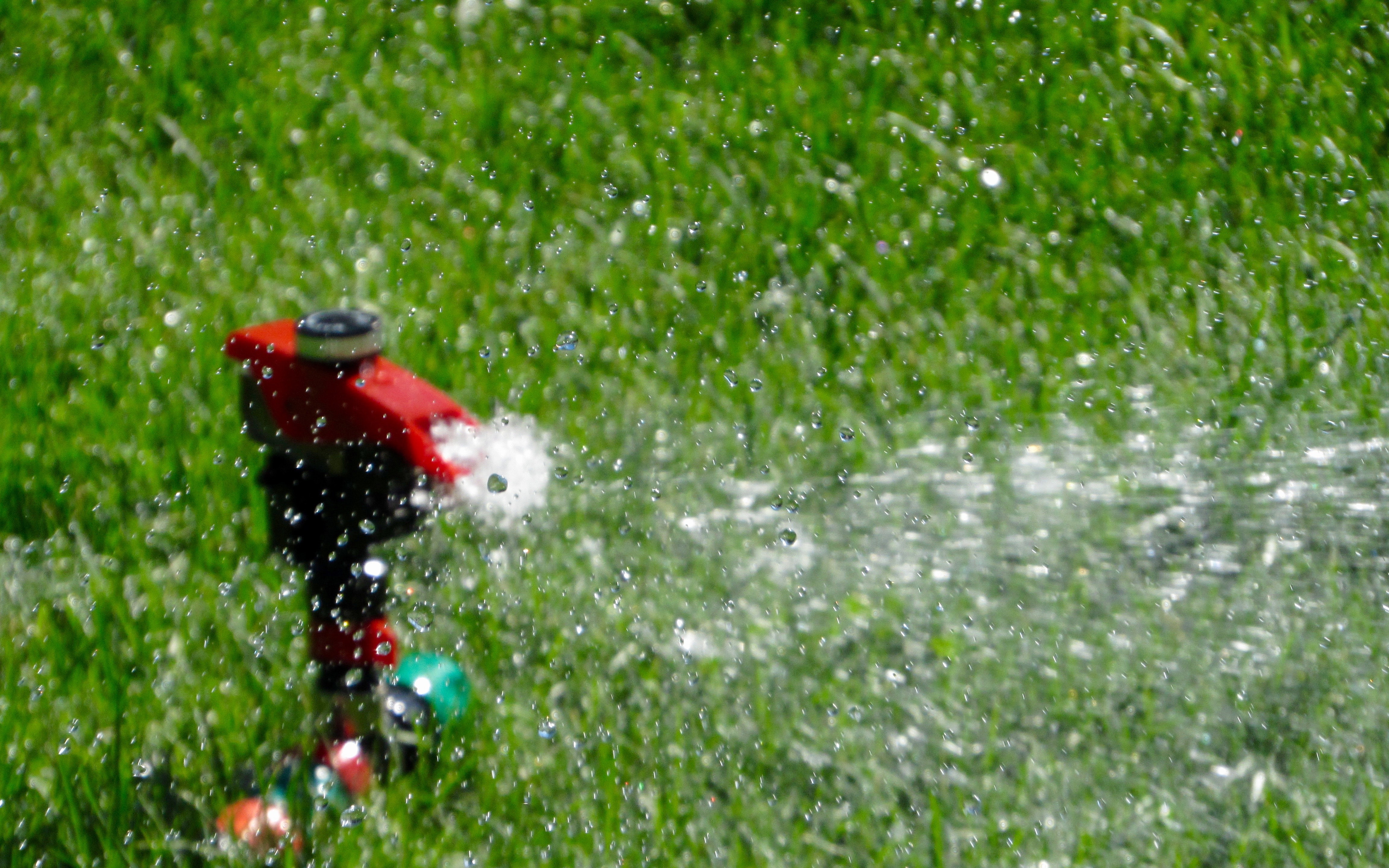 Photo credit: Anthony Lee on Unsplash
Photo credit: Anthony Lee on Unsplash
-
Use A Traveling Sprinkler
Watering by hand is honestly only feasible for small to medium-sized yards. Unless you want to spend hours moving the sprinkler to different spots or holding the hose every day. One way to increase efficiency is by purchasing a walking sprinkler system.
When using a traveling sprinkler, you lay out up to 200 feet of hose where you want the grass watered. Once attached to the hose, the sprinkler travels along its length, watering as it moves.
After laying the hose, you don’t need to do anything until the sprinkler reaches the end and automatically stops. Then you go out and move it to the next spot.
Traveling sprinklers typically spray up to fifty feet, shooting water horizontally about six inches above the ground. This means the water reaches the soil quickly, minimizing how much blows away or evaporates.
-
Install A Subsurface Irrigation System
Subsurface irrigation systems have become a hot topic lately, with more and more people recommending them. They are similar to a typical sprinkler system, but they don’t have heads that pop up to water the grass. Instead, lines are buried underground that release water right to the roots.
This system is cheaper than a sprinkler system and more efficient than using a hose to water your lawn. After installation, turn the water on, and it dampens the entire yard without you needing to move an inch.
Fertilize Warm-Season Grasses
If your turf is warm-season grass, it needs an application of fertilizer in the summer. Warm-season grasses do most of their growing when the temperatures are high, so they need a boost of nutrients. Cool-season grasses (Deer Creek Seed’s 50/50 Kentucky Bluegrass/Perennial Ryegrass Turf Mix and Speedy Green Turf Mix) do not need fertilizing when it’s hot because their growth slows when temperatures climb.
Choose a low-nitrogen formula that slowly releases nutrients over a couple of months to lower the risk of fertilizer burn.
Mulch Around Trees & Shrubs
Summer is an excellent time to mulch areas in your yard where the soil is bare, especially under trees and shrubs. Spread a two to three-inch layer of mulch (bark chips, shredded wood, straw, grass clippings) across the soil surface, keeping it an inch or so from any plant stems.
Mulching the exposed soil surface adds a nice finishing touch. It also lowers the soil temperature so soil moisture doesn’t evaporate as quickly and reduces the germination of weed seeds.
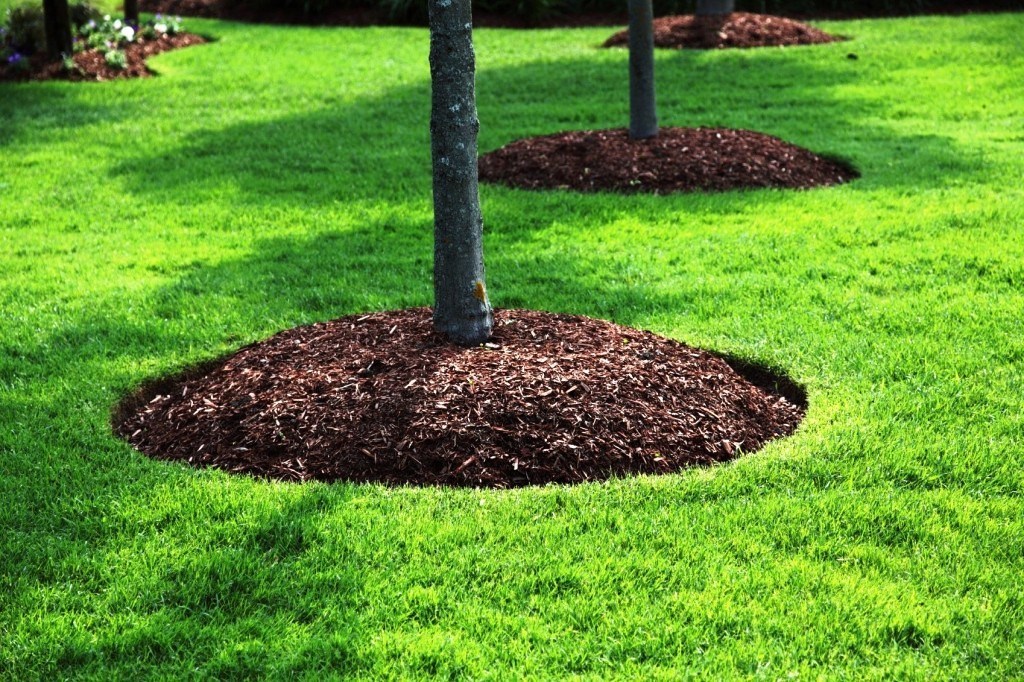
Photo credit: Christopher Hammond on Flickr
Treat Your Lawn For Lawn Grubs
Lawn grubs are the immature larvae of different Scarab beetles. When in your lawn, they feed on the grass’ roots just under the soil surface, creating irregular dead patches that easily pull out when you grab a handful of grass. When left untreated, they cause severe damage to your lawn.
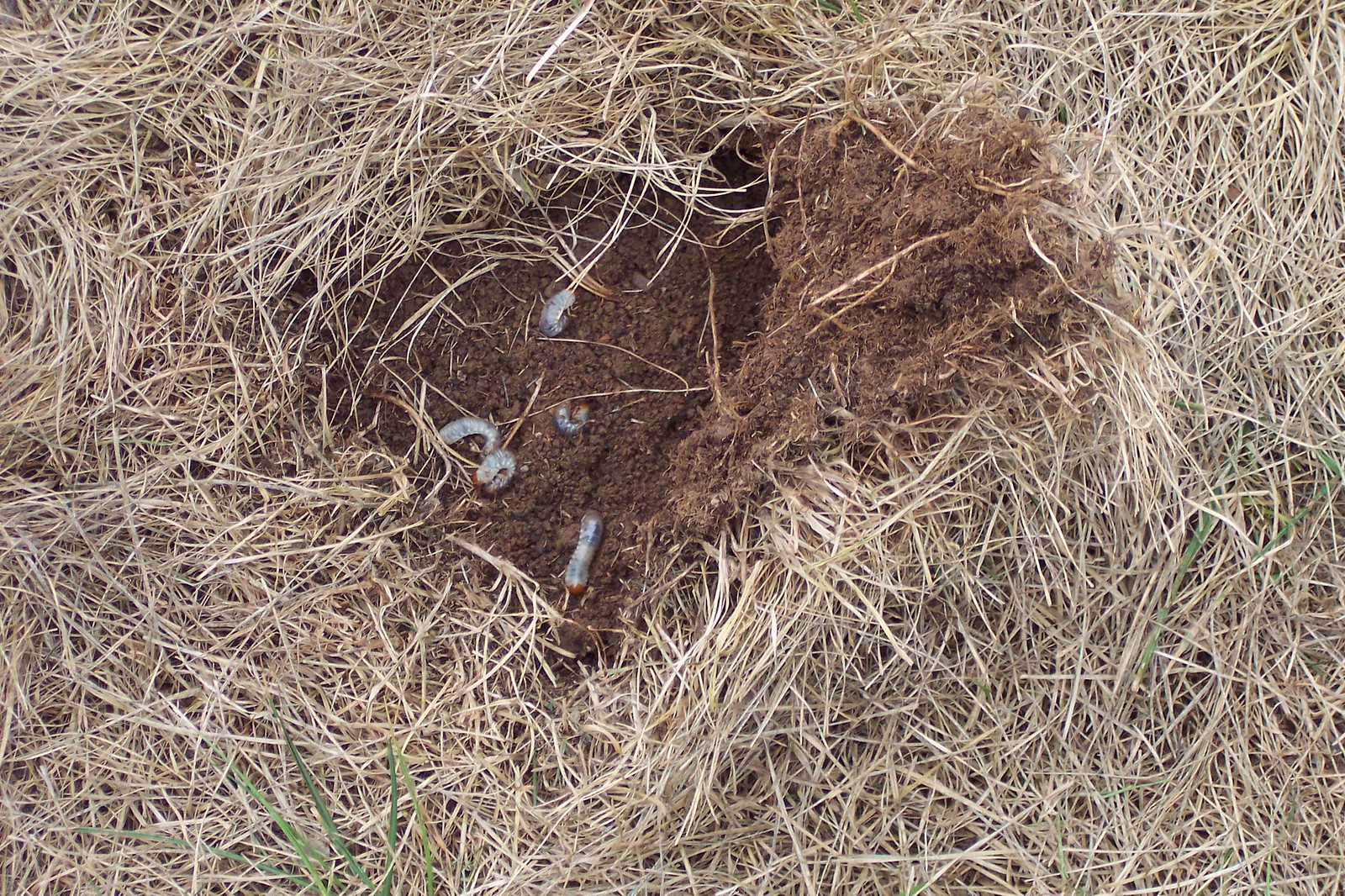
Photo credit: PSU PestEd on Flickr
One of the best ways to avoid grub problems is to apply a grub preventative in early summer. These products kill the eggs and young larvae, so they need to be used before the eggs hatch.
If you missed the window for getting a preventative down, and you know you have a grub problem already, go ahead and treat your lawn with a grub killer. You can apply these products at any time. They contain active ingredients that kill grubs regardless of their stage in life.
It isn’t recommend to overseed these damaged areas during the heat of the summer. It’s best to wait until temperatures start to cool down in the late summer or early fall to reseed, to prevent the grass seed from drying out. Cool-season grasses like (Deer Creek Seed’s 50/50 Kentucky Bluegrass/Perennial Ryegrass Turf Mix and Speedy Green Turf Mix) germinate best when daytime air temperatures are 60 to 75°F.
Get Rid of Pesky Weeds
Another fantastic way to keep your lawn looking great is to control weeds as soon as you see them pop up in the grass. Applying a pre-emergent herbicide in the spring will reduce the number of weeds that sprout but won’t stop them completely. Once you see weeds in the grass, use a post-emergent herbicide formulated to kill weeds and not your lawn specifically. These products typically target broadleaf or non-grassy weeds.
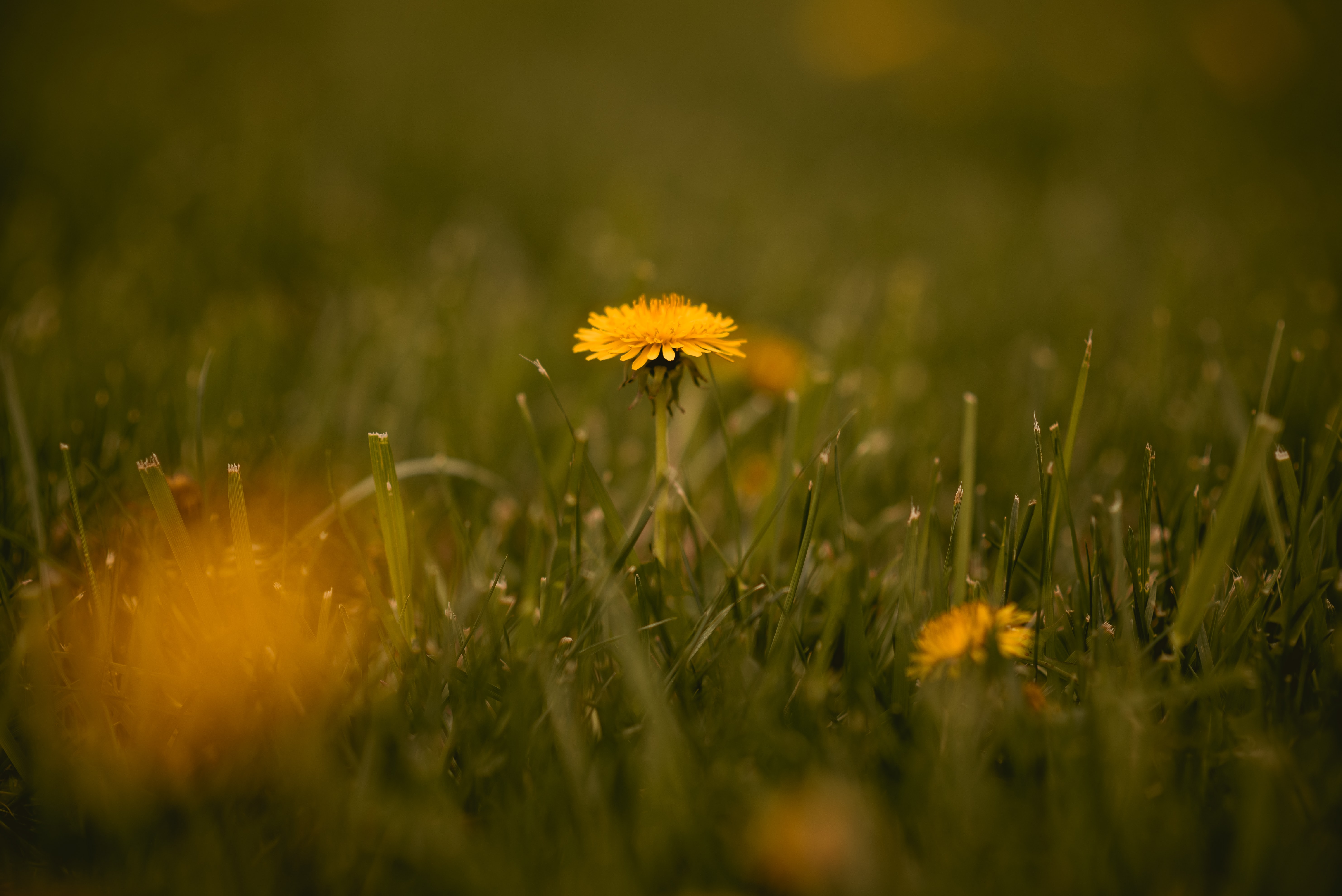 Photo credit: Matthias Cooper on Unsplash
Photo credit: Matthias Cooper on Unsplash
You can also go into your yard and pull the weeds by hand if you are so inclined. The key to removing them is removing the whole plant, including the roots. Use a weed tool or a flathead screwdriver to “pop” the weed, roots and all, out of the ground.
Additional Resources
- The Virginia Cooperate Extension goes more in-depth about mowing height, the one-third rule, and keeping your lawnmower blades sharp.
- Don’t just take our word for it—the University of Georgia Extension talks about grasscycling and its benefits for your lawn and the environment.
- Need help with your watering schedule? The Turfgrass Group has all the information you need about watering your grass deeply, less often.
- BioAdvanced breaks down the differences between cool-season and warm-season grasses and why their fertilizer needs are different.
Think you might have grubs in your lawn? Let the experts at UW-Madison Extension walk you through different control options.



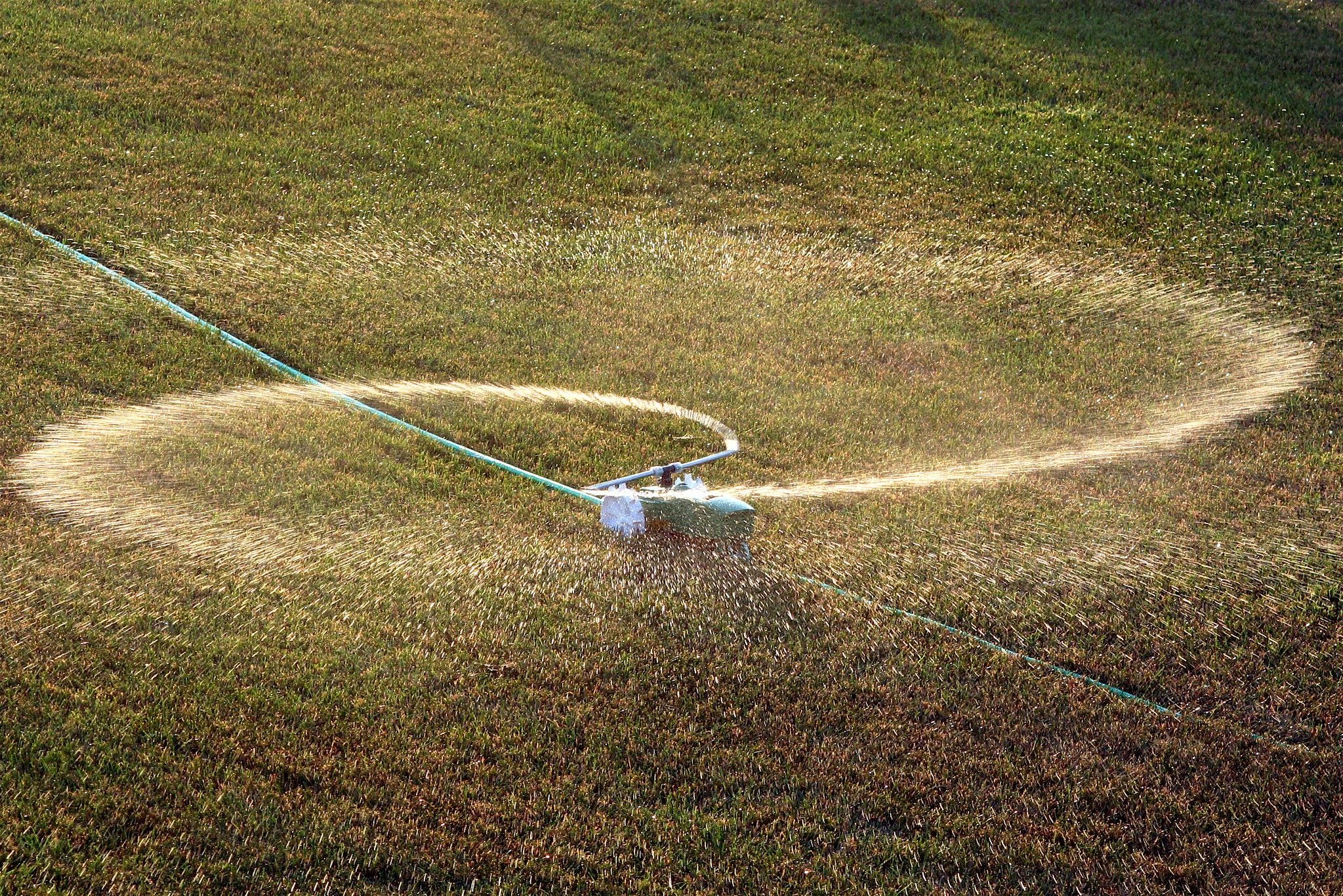 Photo credit:
Photo credit: